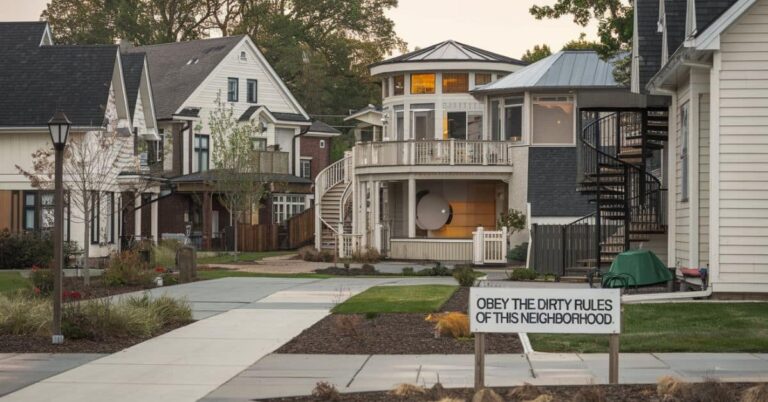The Comfort Checklist: Must-Have Features for Your Commercial Building
Creating a comfortable commercial building is essential for productivity, employee satisfaction, and client retention. A well-designed space not only enhances the experience of those who work in or visit it but also reflects positively on your business.
To help you achieve a workspace that excels in comfort and functionality, here’s a comprehensive checklist of must-have features for your commercial building.
1. Climate Control Systems
A dependable climate control system is essential for maintaining comfort in any commercial building. This involves having an HVAC system that effectively manages both heating and cooling to sustain a consistent and pleasant temperature year-round. For enhanced control and efficiency, consider equipping your HVAC system with pressure transmitters and programmable thermostats.
Pressure transmitters help monitor and regulate pressure levels, ensuring the system operates optimally. Regular maintenance and timely updates to your HVAC system will further ensure stable temperatures and prevent fluctuations that could compromise comfort.
2. Good Air Quality
Indoor air quality significantly impacts comfort and health. Ensure your building has an effective ventilation system that includes air filters and purifiers to remove dust, allergens, and pollutants. Plants can also improve air quality and add a touch of nature to your workspace. Regular cleaning and maintenance of air ducts and filters will help maintain a healthy environment.
3. Ergonomic Furniture
Comfortable and ergonomic furniture is crucial for employee productivity and health. Invest in adjustable chairs that provide good lumbar support, and desks that accommodate various working positions. Ergonomic furniture helps prevent strain and injuries, enhancing overall comfort and efficiency in the workplace. Consider also providing standing desks or sit-stand workstations to cater to diverse preferences.
4. Adequate Lighting
Proper lighting can affect both comfort and productivity. Incorporate a mix of natural and artificial lighting to create a well-lit environment. Natural light improves mood and energy levels, so design your workspace with large windows or skylights where possible. For artificial lighting, choose fixtures that reduce glare and eye strain. Task lighting for specific work areas and ambient lighting for overall illumination are both important.
5. Noise Control
Excessive noise can be a significant source of discomfort and distraction. Implement noise control measures such as sound-absorbing materials, acoustic panels, and carpets to reduce reverberation and noise levels. Creating quiet zones or private spaces for meetings and focused work can further enhance comfort and productivity. Noise-cancelling technologies can also be beneficial in open office environments.
6. Comfortable Break Areas
Break areas are essential for employee relaxation and rejuvenation. Design these spaces with comfortable seating, pleasant décor, and amenities like coffee machines and microwaves. Access to natural light and a connection to outdoor spaces can make these areas more inviting. A well-designed break area contributes to overall employee satisfaction and well-being.
7. Accessible Restrooms
Restrooms should be clean, well-maintained, and easily accessible. Ensure that restrooms are equipped with necessary amenities such as hand soap, paper towels, and toilet paper. Consider incorporating features like touchless faucets and automatic flush toilets to enhance hygiene and convenience. Adequate signage and accessibility features are also important for inclusivity.
8. Flexible Space Design
A flexible layout allows for easy reconfiguration based on changing needs. Modular furniture and movable partitions can help adapt the space for various uses, from collaborative work to private meetings. An adaptable design ensures that the building remains functional and comfortable as your business evolves.
9. Aesthetic Appeal
The visual appeal of a commercial building contributes to overall comfort. Use calming colors, appealing textures, and tasteful décor to create a pleasant atmosphere. Art installations, indoor plants, and well-designed furniture can enhance the aesthetic and contribute to a more enjoyable environment.
10. Safety and Accessibility
Comfort also involves ensuring a safe and accessible environment. Implement features such as well-lit walkways, clear signage, and accessible entry points for individuals with disabilities. Regularly check and update safety measures such as fire alarms, emergency exits, and first aid kits. An environment that prioritizes safety and accessibility is not only more comfortable but also demonstrates care for everyone who uses the space.
11. Temperature Regulation
Beyond climate control, ensure that individual temperature preferences are accommodated. Providing options such as personal fans or heaters at workstations can help employees regulate their comfort levels. A temperature that suits everyone’s needs contributes significantly to overall satisfaction.
Conclusion
Creating a comfortable commercial building involves attention to various elements that collectively enhance the experience for employees and visitors. From climate control and air quality to ergonomic furniture and noise control, each feature plays a vital role in achieving a pleasant and productive environment. By following this comfort checklist, you can ensure that your commercial space meets the needs of its occupants and supports the success of your business.







